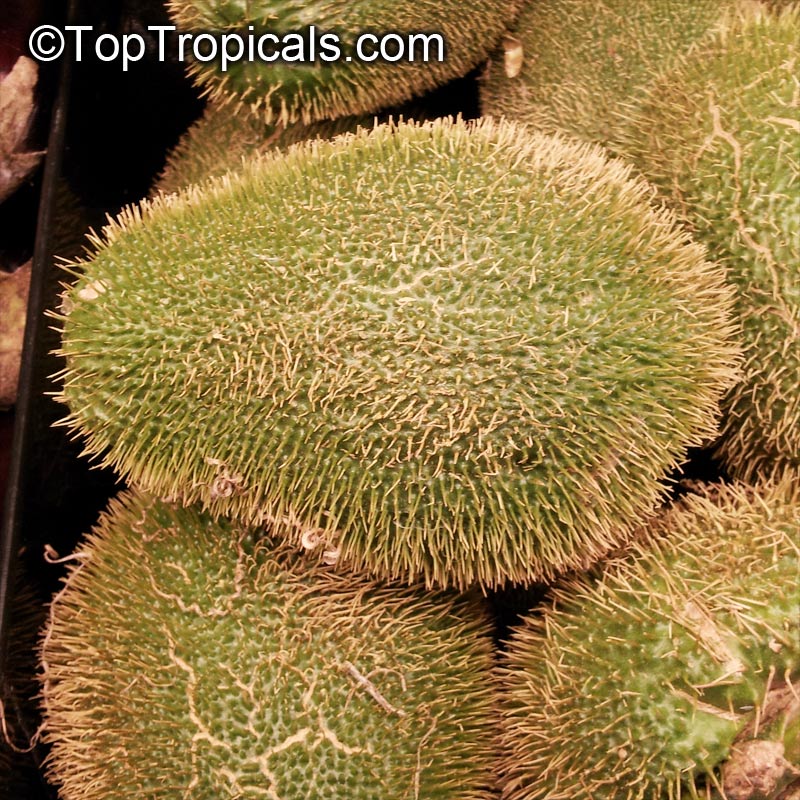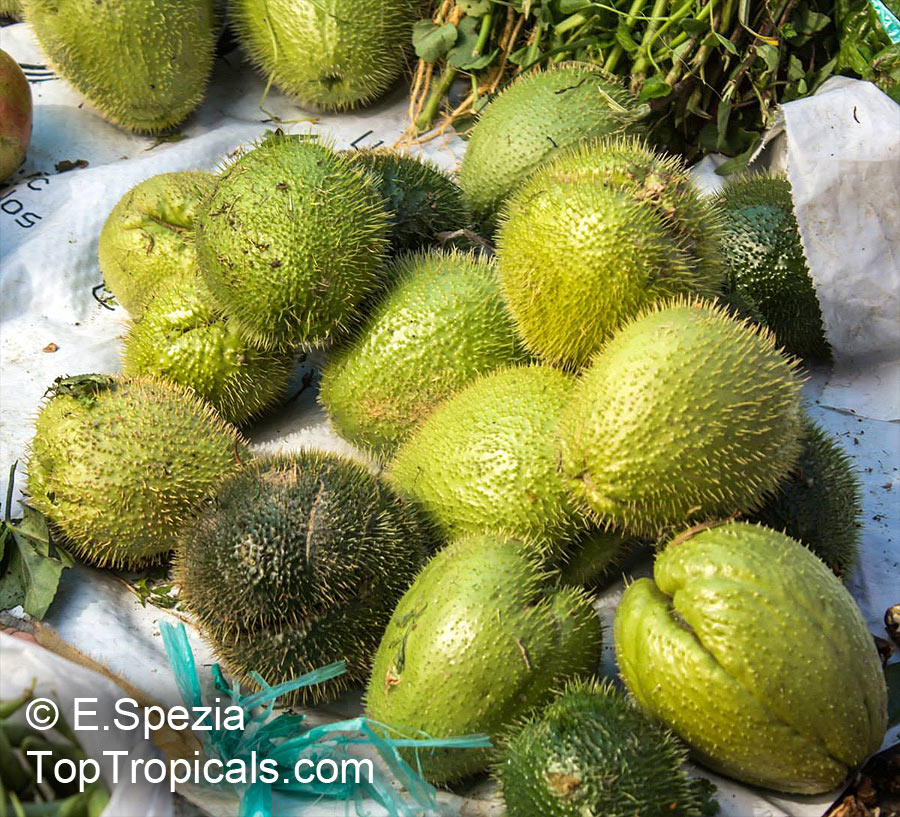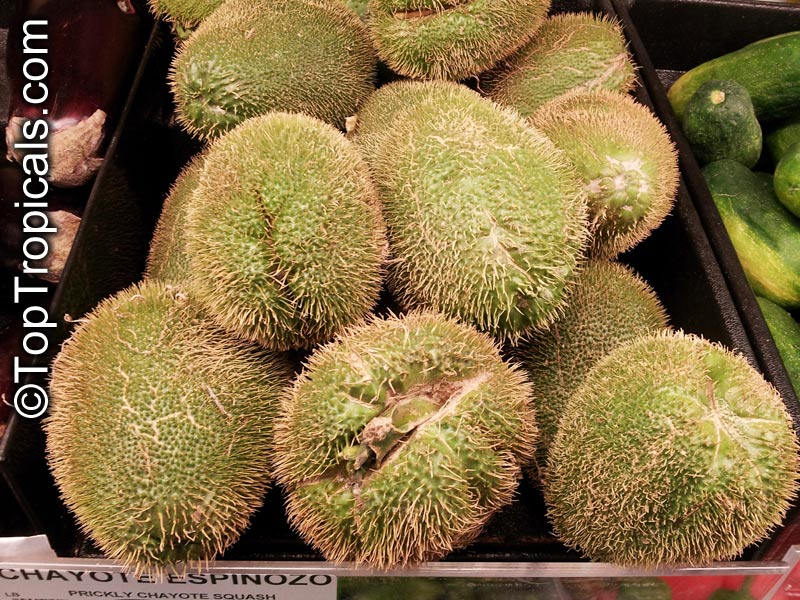TROPICAL PLANT ENCYCLOPEDIA
Sechium edule, Sicyos edule
Chayote, Chayote Squash, Vegetable Pear, Chaw ChawFamily: Cucurbitaceae
Origin: Mexico, Central America










The Sechium edule can be grown on the ground, but as a climbing plant, it will grow onto anything, and can easily rise as high as 12 meters when support is provided.
In the most common variety, the fruit is roughly pear-shaped, somewhat flattened and with coarse wrinkles, ranging from 10 to 20 cm in length. It looks like a green pear, and it has a thin, green skin fused with the green to white flesh, and a single, large, flattened pit. It is a true multi-purpose crop with edible fruit, edible leaves and edible tuberous roots. Some varieties have spiny fruits.
Link to this plant:
https://toptropicals.com/catalog/uid/sechium_edule.htm


